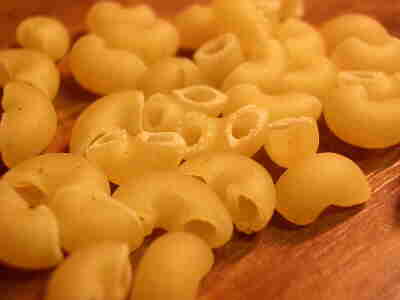 SKC Films Library SKC Films Library |
| |
| SKC Films Library >> Technology >> Home Economics
>> Cookery |
 Macaroni Macaronia type of pasta made from durum (hard wheat) flour mixed with water Macaroni products come in many shapes and kinds, but the best known are long, hollow tubes of dough, about 1/10 to 1/4 inch in diameter. Elbow macaroni is formed into short, curved tubes. Shell macaroni has the shape of tiny sea shells. Spaghetti and vermicelli are both made from durum flour, but whether or not they are technically macaroni products depends on regional preferences -- in some areas macaroni must be tube-shaped, while in others it is the type of flour used that makes a pasta product macaroni, not its shape. Because of its bland taste, macaroni can be served with many types of food. To make macaroni, the flour and water are thoroughly mixed and formed into dough. After the dough has been kneaded, it goes to a press where it is forced through holes. Steel pins in the center of the holes go through the dough and form it into hollow tubes. Forced air dries the dough in heated drying rooms. A single serving of macaroni (about 2 ounces pre-cooked) naturally contains 7 grams of protein and 39 grams of carbohydrates, and manufacturers often enrich it to supply from one-fourth to one-half of a person's daily requirements of the B vitamins. Macaroni has been a staple food in many European countries for centuries. Its exact origins remain a mystery, with various historians crediting the ancient Chinese, Greeks, Romans, and Arabs for its creation. SEE ALSO |
SKC Films Library >> Technology >> Home Economics >> Cookery This page was last updated on February 02, 2017. |